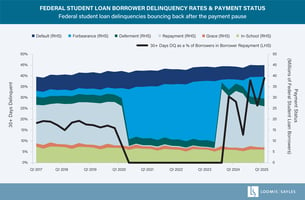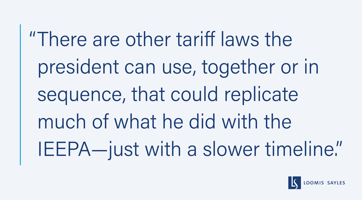
Yield Reset Spurs the Return
of Multisector Fixed Income
WRITTEN BY
MATT EAGAN, CFA
Head of Full Discretion, Portfolio Manager
BRIAN KENNEDY
Portfolio Manager, Full Discretion
BRYAN HAZELTON, CFA
Associate Portfolio Manager & Strategist, Full Discretion
DAVID ZIELINSKI, CFA
Investment Director, Full Discretion
Higher yields have created compelling opportunities across the full universe of fixed income sectors. As a result, we believe investors should rethink their approach to fixed income and broaden their risk factor exposure.
The precipitous drop in risk-free rates from the global financial crisis (GFC) through the COVID-19 pandemic caused many investors to avoid higher-quality components of the global bond universe and narrow their fixed income portfolios away from multisector strategies to focus on multi-asset credit (MAC) strategies and other higher-yielding instruments, such as private debt.
Key Takeaways
1.
The full fixed income universe is back in play: we believe the dramatic yield increase has created compelling reasons to revisit a multisector approach that seeks opportunities across the credit quality spectrum, capital structures, geographies and currencies.
2.
Narrower fixed income strategies emphasize one primary risk factor, such as credit or duration risk. A multisector approach has the potential to harness a range of risk premia and recalibrate exposures as market conditions change.
3.
The reset in yields has enabled higher-quality bonds to once again potentially help cushion portfolios from the impact of interest rate and spread volatility on total return, and public fixed income exposure can provide a source of liquidity in volatile periods.
Investors shunned low-yielding bonds with higher interest rate risk and instead embraced credit and illiquidity risk to maintain attractive levels of income. But, in our view, the dramatic yield increases since the US Federal Reserve and other central banks began raising interest rates to fight inflation have created compelling reasons to revisit a multisector approach.
Today, the full fixed income universe is back in play. We believe this shift highlights the attractiveness of multisector strategies that can pursue potential opportunities across the risk spectrum and harness multiple sources of risk premia. In addition to the now-attractive yields offered by US Treasurys and other high-quality debt, the liquidity of public fixed income markets is increasingly valuable as tighter monetary conditions weigh on global financial systems and potentially increase recession risk. Regardless of where interest rates head over the next several years, we find that the upward reset in yields has created compelling opportunities for actively managed strategies that aren’t constrained by a narrow approach to fixed income.
RISK-FREE RATES AND SPREADS ON RISK ASSETS RESET DRAMATICALLY IN 2022
This shift eliminated the significant risk asymmetry for high-quality bonds that existed when interest rates had nowhere to go but up. This reset has resulted in attractive risk/return profiles across sectors in our view.
Source: Bloomberg, data as of 31 March 2024. Used with permission from Bloomberg.
This material is for informational purposes only and should not be construed as investment advice. Information obtained from outside sources is believed to be correct, but Loomis Sayles cannot guarantee its accuracy. This material cannot be copied, reproduced or redistributed without authorization.
Asset Flows Reflect Shifting Yield Environment
The global financial crisis created dislocations that investors sought to capitalize on, resulting in a large shift into flexible fixed income strategies that offered a wider opportunity set. As a result, multisector and unconstrained fixed income mandates grew fivefold from 2008 to 2014.
Investors’ focus on MAC strategies is a relatively recent phenomenon, one driven by the search for yield and return in an environment where negative-yielding high-quality debt became more prominent, particularly beginning in 2015-2016. As investors became increasingly willing to add credit and illiquidity risk to generate income, assets invested in MAC strategies grew by 70% in 2016 (and tripled from 2015 to 2021).1
Despite MAC’s recent popularity and momentum, multisector and unconstrained fixed income strategies still dwarf the MAC market in terms of assets under management. Although multisector assets have declined since their peak, we believe this trend is likely to reverse. Now that yields have reset, with the 10-year US Treasury trading in line with pre-GFC levels, we believe investors are likely to seek fixed income strategies with more flexibility to manage volatility in multiple risk factors—not just one in isolation—including interest rate, credit, idiosyncratic, liquidity and currency risk.
MULTISECTOR AND MULTI-ASSET CREDIT (MAC) ASSET LEVELS
The growth of MAC assets—and the plateauing of multisector fixed income assets—coincided with the surge in negative yielding government debt. But now that yields are significantly higher across the globe, multisector strategies are increasingly attractive in our view.
Source: Bloomberg, eVestment; data as of 31 March 2024. Used with permission from Bloomberg.
This material is for informational purposes only and should not be construed as investment advice. Information obtained from outside sources is believed to be correct, but Loomis Sayles cannot guarantee its accuracy. This material cannot be copied, reproduced or redistributed without authorization.
Higher Yields Improve Bonds’ Risk/Return Profiles
Now that yields have reset away from the zero-bound floor, risks have become more symmetrical across fixed income sectors. One dramatic effect of this shift is that adding higher-quality bonds can now do what was unthinkable just a few years ago—improve a bond portfolio’s potential risk/return profile.
Higher yields across fixed income sectors help to dampen a bond portfolio’s volatility by providing a cushion from the impact of interest rate and spread volatility on total return. As the exhibits below show, using the Bloomberg US Aggregate Index as a proxy for the broad fixed income market, a 100-basis-point (bp) rise in interest rates in 2024 could result in approximately a quarter of the loss it would have in 2021. Similarly, as spreads widen, income has a more powerful effect of maintaining a positive return: 100 bps of widening in credit spreads in 2021 would have resulted in a roughly -2% anticipated return for the index, while the same widening in 2024 could still yield an anticipated positive return of 1.2%. Using the median of the eVestment Combined Multi-Sector and Unconstrained Universes (bottom charts below), a multisector portfolio, by way of adjusting risk factor exposures based on market conditions, improves the downside expectations even further, with a 100-bp rise in interest rates or 100 bps of spread widening, resulting in an anticipated return of approximately 2-3%.
Source: Bloomberg, eVestment, Loomis Sayles; data as of 31 March 2024.
This material is for informational purposes only and should not be construed as investment advice. Information obtained from outside sources is believed to be correct, but Loomis Sayles cannot guarantee its accuracy. This material cannot be copied, reproduced or redistributed without authorization.
Wider Opportunity Set Unlocks More Ways to Enhance Returns and Diversification
In our view, one of the greatest benefits of multisector investing is the ability to be nimble and pursue diverse opportunities in fixed income portfolios. Thanks to their flexible mandate and focus on total return, multisector strategies allow investors to pursue opportunities across geographies, sectors, issuers, capital structures, credit qualities and currencies.
SOURCES OF TOTAL RETURN: SECTOR ROTATION AND SECURITY SELECTION
Leadership among fixed income sectors—and dispersion among sectors—varies dramatically across economic cycles. These dynamics highlight the benefits of a flexible approach to pursuing relative value in fixed income markets. As depicted in the grey bars, the average dispersion between the highest and lowest return in a calendar year has been 24% over the past 20+ years. Increased dispersion creates potential opportunities for active management across sectors and issuers.
Source: Bloomberg, eVestment; data as of 31 March 2024. Used with permission from Bloomberg.
This material is for informational purposes only and should not be construed as investment advice. Information obtained from outside sources is believed to be correct, but Loomis Sayles cannot guarantee its accuracy. This material cannot be copied, reproduced or redistributed without authorization.
Multisector strategies also allow investors to diversify their risk factor exposure through one allocation. Narrower fixed income strategies emphasize one primary risk factor, such as credit risk with MAC or duration risk with core bond allocations. Multisector strategies offer an efficient way to harness credit, duration and currency risk premia and dial these exposures up or down as market conditions change. We believe a more balanced approach to managing risk exposure, one that goes beyond just embracing credit risk, is prudent in the current uncertain environment. The ongoing yield curve normalization suggests an opportunity to add interest rate exposure back into fixed income portfolios. These dynamics also position fixed income to once again be an effective tool to help cushion against equity drawdowns.
ANALYZING RISK FACTOR EXPOSURES IN FIXED INCOME STRATEGIES
The Bloomberg US Aggregate Index is dominated by interest rate risk, and the risk profile of a multi-asset credit proxy is almost entirely driven by credit spreads. Multisector strategies can embrace different risks at various points of the market cycle, which has the potential to deliver more diversified, and uncorrelated, exposures over time.
**33% Bloomberg Corporate High Yield Index, 33% JP Morgan EMBI Global Diversified Index, 33% Credit Suisse Leveraged Loan Index.
Source: Bloomberg, JP Morgan, Credit Suisse, Loomis Sayles; data as of 31 March 2024. Used with permission from Bloomberg.
This material is for informational purposes only and should not be construed as investment advice. Information obtained from outside sources is believed to be correct, but Loomis Sayles cannot guarantee its accuracy. This material cannot be copied, reproduced or redistributed without authorization.
Uncertainty Calls for a Flexible Approach
Fixed income investors currently face major uncertainty on multiple fronts. Will central banks have the flexibility to cut interest rates in the face of unstable inflation? Will tight financial conditions and elevated real interest rates trigger a recession? If so, how quickly and how much will central banks decrease interest rates to mitigate the economic downturn? How might rising geopolitical risk factors, including elections, affect financial markets?
The lack of clarity into these questions highlights the value of having the flexibility to draw on multiple risk factors in a fixed income portfolio and the importance of having access to different risk/reward profiles across the credit quality spectrum as well as up and down the capital structure. Given the macroeconomic uncertainty, a multisector strategy can take advantage of dislocations across the globe, alleviating the time it may take investors to reallocate from other parts of their portfolios. For large institutional investors that require board approvals and lengthy manager searches, the multisector approach can help provide an element of tactical management to their broader asset allocation.
Today’s conditions support a case for multisector strategies to become an increasingly central part of investors’ fixed income portfolios. When making these allocations, we believe investors should seek strategies that embrace broad sector exposure with flexible guidelines and managers that have experience investing through all phases of the credit cycle.
FIXED INCOME PORTFOLIOS THROUGHOUT THE CREDIT CYCLE
Multisector fixed income strategies allow investors to be nimble in reallocating portfolio risks as interest rates, credit spreads, currency dynamics and macroeconomic conditions change.
Authors
Matt Eagan, CFA
Head of Full Discretion, Portfolio Manager
Brian Kennedy
Portfolio Manager, Full Discretion
Bryan Hazelton, CFA
Associate Portfolio Manager & Strategist, Full Discretion
David Zielinski, CFA
Investment Director, Full Discretion
Endnotes
1 Source: eVestment data.
Disclosure
This marketing communication is provided for informational purposes only and should not be construed as investment advice. Investment decisions should consider the individual circumstances of the particular investor. Any opinions or forecasts contained herein, reflect the subjective judgments and assumptions of the authors only, and do not necessarily reflect the views of Loomis, Sayles & Company, L.P. Investment recommendations may be inconsistent with these opinions. There is no assurance that developments will transpire as forecasted and actual results will be different. Information, including that obtained from outside sources, is believed to be correct, but we cannot guarantee its accuracy. This information is subject to change at any time without notice.
Any investment that has the possibility for profits also has the possibility of losses, including the loss of principal.
Market conditions are extremely fluid and change frequently.
Diversification does not ensure a profit or guarantee against a loss.
Indices are unmanaged and do not incur fees. It is not possible to invest directly in an index.
Past performance is no guarantee of future results.
LS Loomis | Sayles is a trademark of Loomis, Sayles & Company, L.P. registered in the US Patent and Trademark Office.
MALR032728

